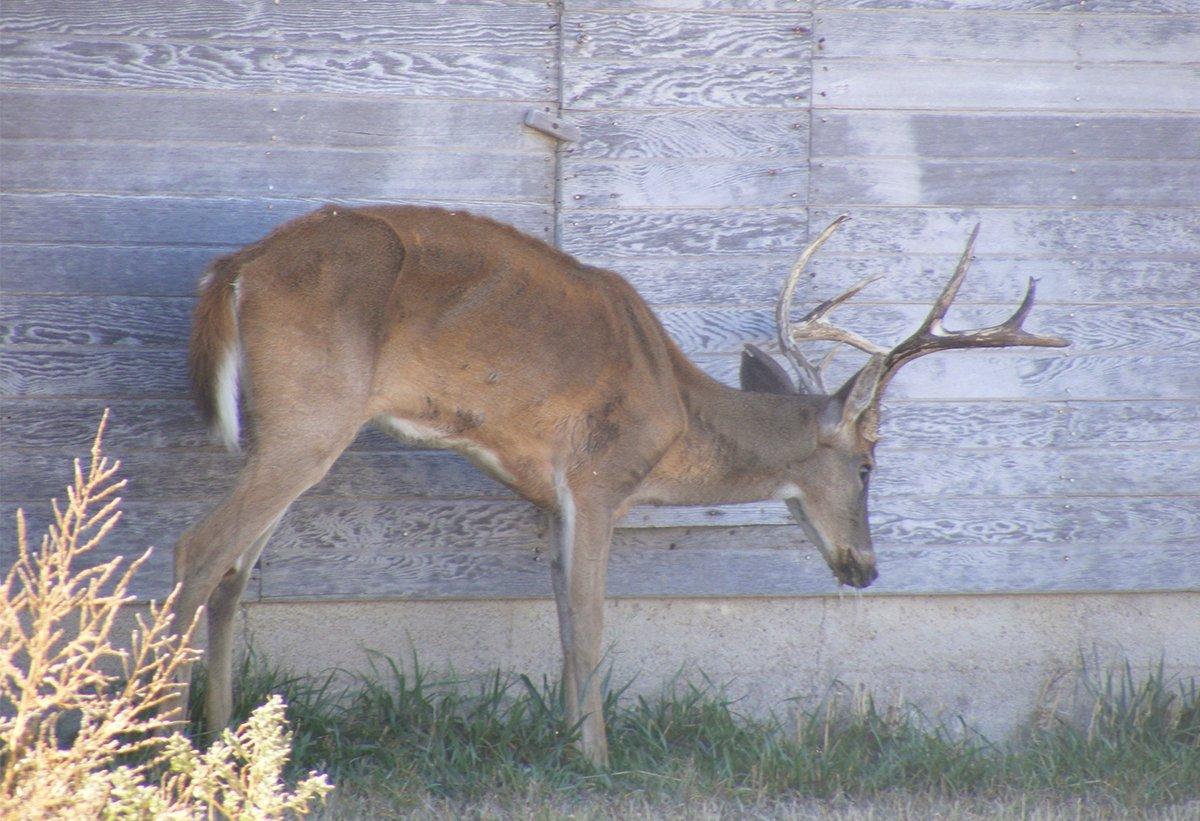Do You Have CWD Where You Deer Hunt?
Words and phrases like "only option," "decimate," "picket lines," "eradicate," and yes, even "aerial shooting" are being bantered about in deer hunting and deer management circles with increasing fervor. While certainly strong language, could we be too late?
Too late for what you ask? Chronic Wasting Disease, that's what. Up until recently, Chronic Wasting Disease was a problem only in a few western and plains states. Colorado was, and still is, a problem site. The good news, if there is any for Colorado and the rest of the western and prairie states is that the low deer densities help prevent the disease from gaining a strong foothold in a significant number of the deer and elk population.
The Bad News
The bad news that makes the word "bad" seem so minimal is that the disease has now spread. Spread all the way to the high-deer-density population in southwestern Wisconsin, among other states. If you've never been worried about disease in a population of wild animals, now is the time.
It doesn't matter where you live in whitetail country. This is one bad sucker.
According to experts at the federal level, CWD was first discovered back in 1967 in a herd of captive elk that was imported to Colorado's western slope from Canada. Just what shipment is not known as this importing of game was, and in some places still is big business.
From that shipment (or shipments), the disease spread to the wild deer and elk in the surrounding area. Up until recently, the disease was confined to a small area of land in Colorado.
That changed and CWD was discovered in captive elk herds, and wild deer in South Dakota, Nebraska, Kansas, Montana, Saskatchewan, etc. Experts thought the disease could not jump past the Rockies of Colorado. It did. Experts also thought the Mississippi River provided another impenetrable barrier for the disease. These experts were wrong, too.
Don't Miss: The Latest on CWD - It's Worse Than We Thought
After the discovery the WDNR conducted a special hunt in a 415-square mile area near Mt. Horeb, a small town in the southwestern part of the state where the deer came from. At the end of the study, a total of 516 deer were harvested and 14 deer tested positive for the disease.
Just how the disease made it to Wisconsin is unclear. Some surmise that the disease was brought in via a western state kill and that the carcass(es) were improperly disposed of. Others believe that it may have come in with the transport of live deer or elk to a captive herd in the state.
CWD is an always-fatal disease among cervids like deer and elk. Not unlike Mad Cow Disease, it attacks the neurological system of the animals and is manifested in the brain, spinal cord, spleen and lymph nodes. Infected animals in the terminal stages appear to be emaciated, wasting away to nothing. Think severe starvation and you have a good picture.
However, these symptoms can take a long time to manifest themselves. CWD has an incredibly long incubation period. Just how long is not known but studies in Colorado have shown that the disease can remain viable in the soil after decontamination procedures are taken. How long after? Officials in Colorado say they believe it can remain a hazard for up to five years or longer.
Don't Miss: CWD Study Raises Grave Concerns
Before we go any further, it is very important to note that CWD, completely unlike Mad Cow Disease, is not thought to be a hazard to humans nor to domestic livestock. This belief is held by many in the scientific community but some, including Valerius Geist, a legendary wildlife scholar at the University of Calgary, disagree saying that we simply do not have enough information to make that call. And more recent data suggests it could affect humans.
What's Being Done
It would be nice to think the federal government would get involved and help state wildlife agencies combat the spread of the disease. There does seem to be a mixed message regarding involvement, however.
In a story for the Associated Press, Philip Brasher quotes Deputy Commissioner Lester Crawford of the Food and Drug Administration, "There's every reason to be concerned that we control it and confine it now that we have the opportunity." This begs the question, why have the feds waited so long?
There is no probably about it folks. This thing has got to be stopped and not just because it might, but likely is not, transferable to domestic livestock. To be fair to Mr. Crawford, the problem is not the FDA's, it is all of ours.
While I'm certainly not an expert on the spread of wildlife diseases, I think it is time to do something drastic now. State's should ban the import of deer and elk and the expansion of captive herds under high fence. They should begin a monitoring program of their wild deer and elk, testing a percentage of the hunter harvest each fall. As hunters. We need to ask ourselves if artificially high deer densities are a good thing. And, if we are not afraid, we should be very, very concerned.
Don't Miss: 20 Deer Hunting Lies Your Granddaddy Told You
Editor's Note: This was originally published on May 14, 2002.
Are you a deer hunter thirsty for knowledge? Check out our stories, videos and hard-hitting how-to's on deer hunting.








